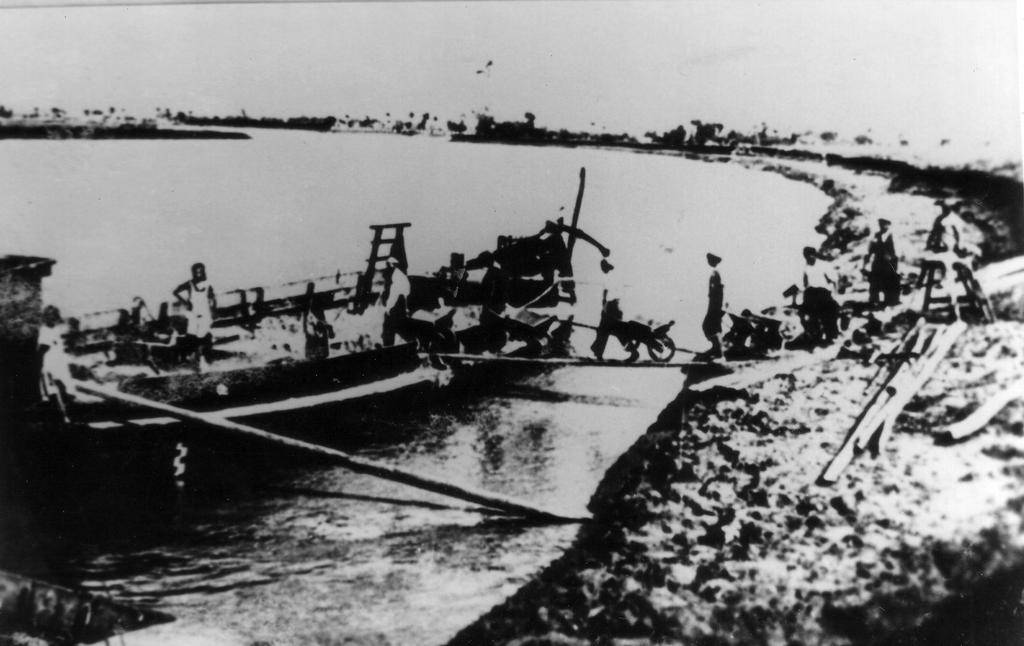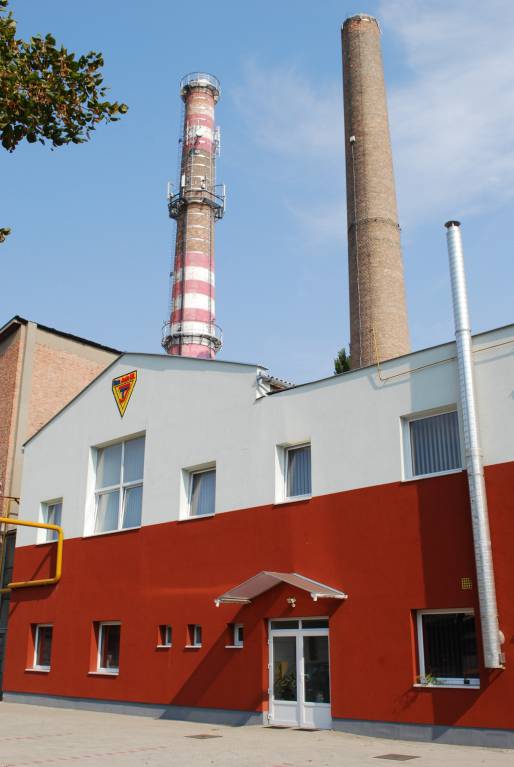For visitors
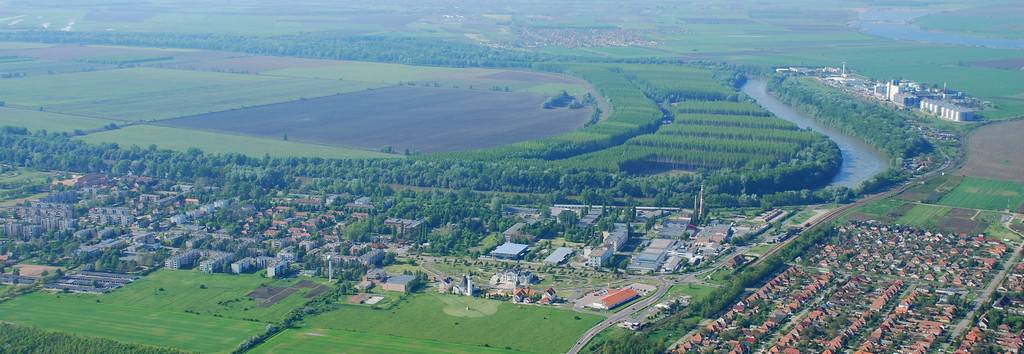
Martfű Town's introduction film
Einführungsfilm über Stadt Martfű

Martfű always takes care its values, if it was possible: it lived, if it was necessary: it survived, but it did not give up, and it will never give up. Looking at the pictures taken decades ago and those which have been taken nowadays, you can still admire the changes even if you have not been here before, or if you left this place long time ago. As the shoe factory „grew out of” the maize-field, the new city centre grew up,too connecting the new and the old part of the settlement. The Saint Stephan Square includes the City Hall, a Catholic and a Reformed church, statues which are in commemoration of noble people and noble acts, nice trees and gorgeous flowers.
The present and the future of the city is closely related to the rational processing of the educational, medical, cultural and sport institutions, and further exploitation of natural and built environment.
Based on the local workforce and the treasure of Martfű new companies have been set up besides the old ones and this process is still continuing.
The successful European Union tenders, the region associations show the need of reformation here, on the left bank of the „blond” sandy Tisza.
The aim of the Town Council is that the relationship among the local people, small and big firms and the city management become serried, because it is a virtue like thermal water and the chestnut-tree alley.
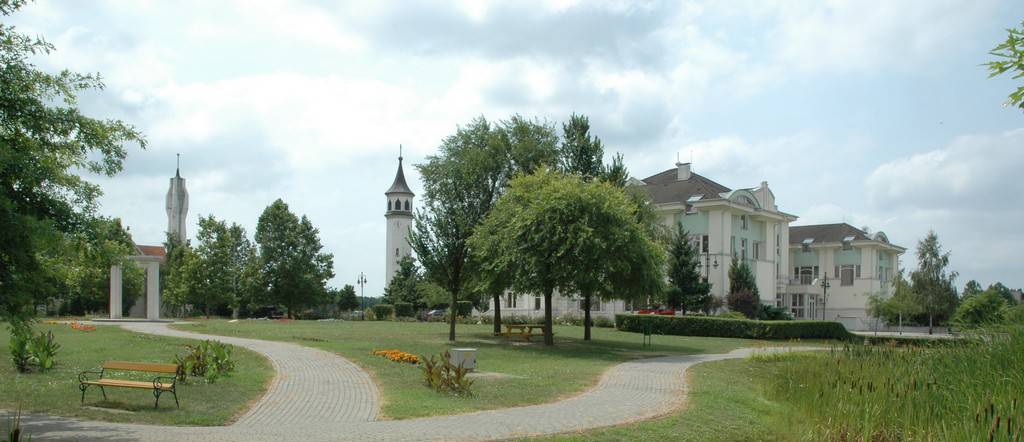 |
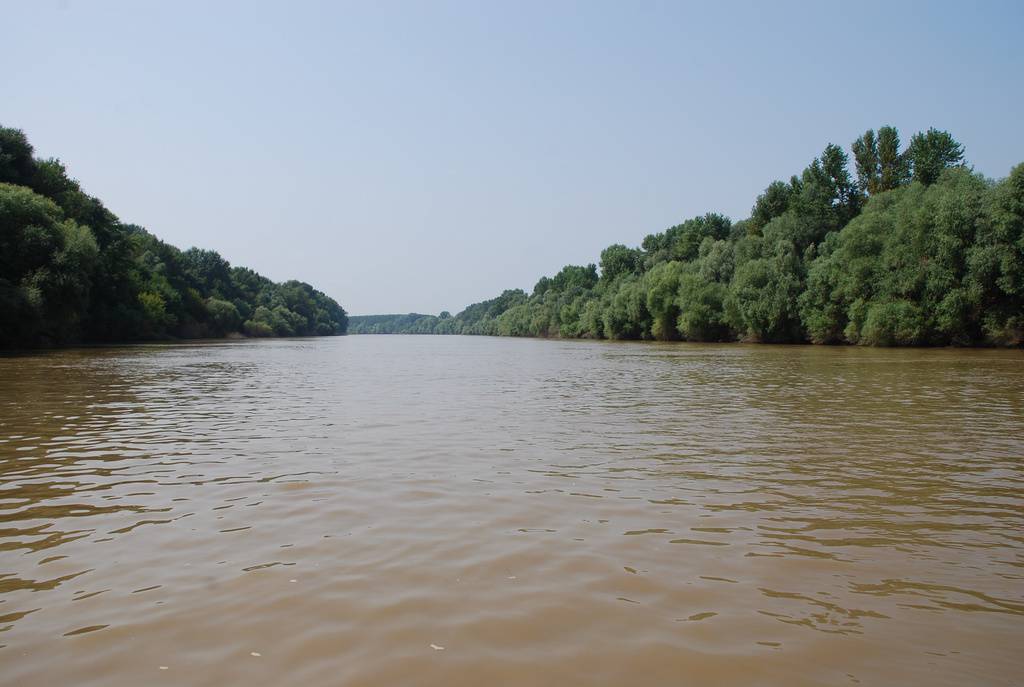 |
Settlement history- common way, on which the reminiscent, the formative and the innovative walk hand in hand
Martfű is in the southern corner of Jász-Nagykun-Szolnok country, on the left coast of the Tisza. It is said, that the Mart-fű neology decends from the coast made by the river, and with the water abounding good grass areas. According to other opinions, the Mart- was used for the nomination of outstanding places dialectically. The fű, in turn the fej (head), the dialectal shape of our word fő (an other word for head) with Finno-Ugric origin.
Let anything be the truth, one thing is sure: the ancient people liked living here for longer or smaller period, too. There are many remains from Sarmatians or Hungarian conquerors which indicate it. An important trade route led through the Tisza in the Middle Ages, with double ferriage towards Vezseny, Varsány, and Várkony.
The first written memory about Martfű is from the 15th century. According to this document, Tiszaföldvár together with Martfű’s barren was the property of Dunaföldvár Abbey. In the second decades of the Turkish occupation the Buda pasha attached Martfű to the Szolnok sanja area, though the course of the Tartar mayhems it was probably totally destroyed.
The story of the place was combined with its landowners' fate in the following centuries. The period of improved manors and the pretty environment embraced mansions was the period of the claim for the education and the civilisation.
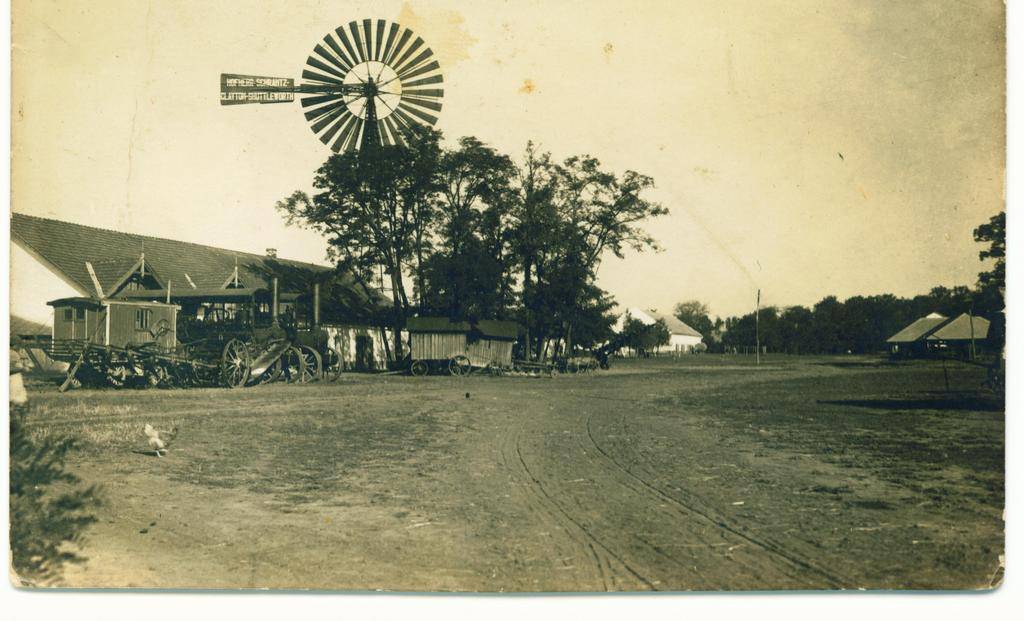 |
The architectural imprint of the age with its intellectual heritage is still having influence, in turn people arriving here or people travelling through receive a totally other view from the settlement: a small town surrounded with modern industrial establishments.The change started in the 1800s, when the fishery, livestock producing, milk processing farming settlement started to deal with producing tiles and bricks.The high-altitude centre of the place is a clay lentil, which made possible that the Martfű brick production attained its technical apex.The factory went through continuous development from the beginning of possessing by Laczkó Gusztáv, attracting the positive changes in the infrastructure and the housing conditions.Today quite a few houses are from the so-called brick-work houses. The old collectives are captured on the yellow-turned family photos. We know from this source, that besides the industrial production an important cultural life got organized with the help of people worked there.
The building-material insuring factory, the public road, railroad, waterway were all important viewpoints, when the Bata shoe making company pondering the firm's Hungarian expansion bought the land here in August, 1940. In the next year the building operations started and the foundation stone became grass roots of a huge building operation literally and figuratively.
|
|
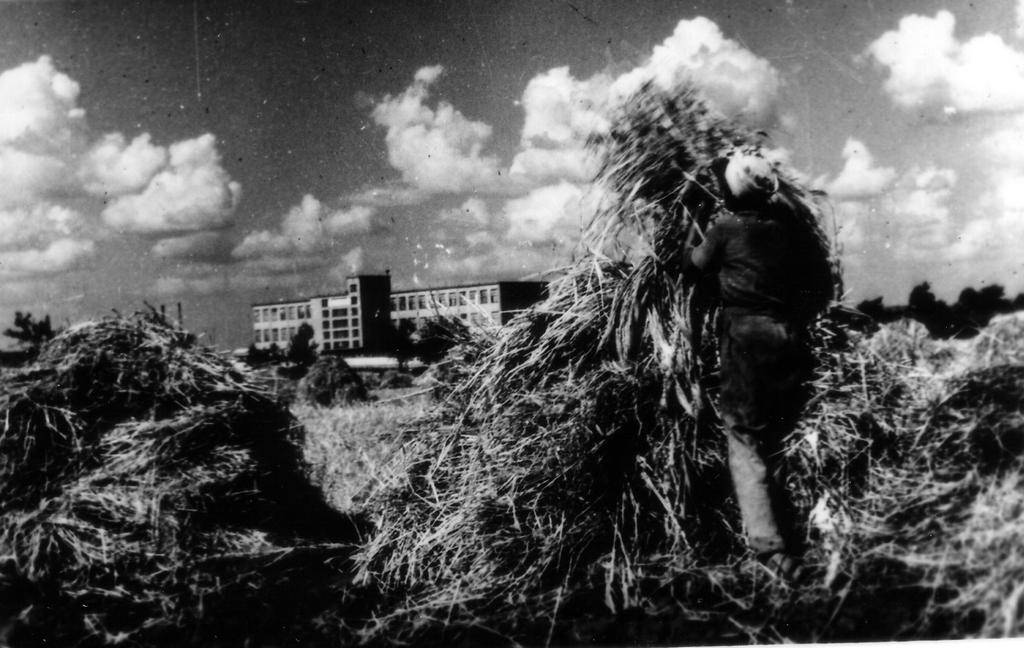 Work in the field and the building of Cikta |
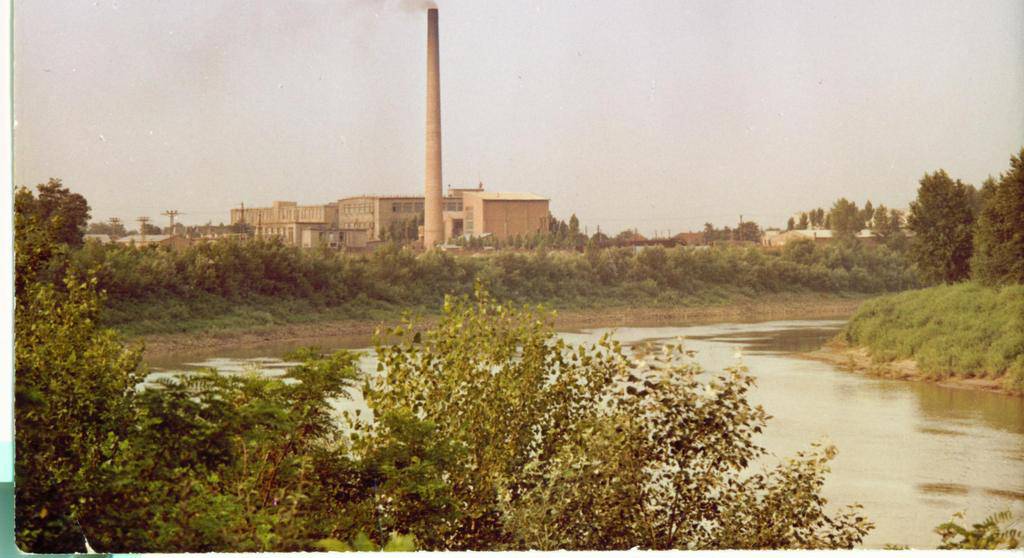 View of Tisza Shoe Factory with one chimney from the north |
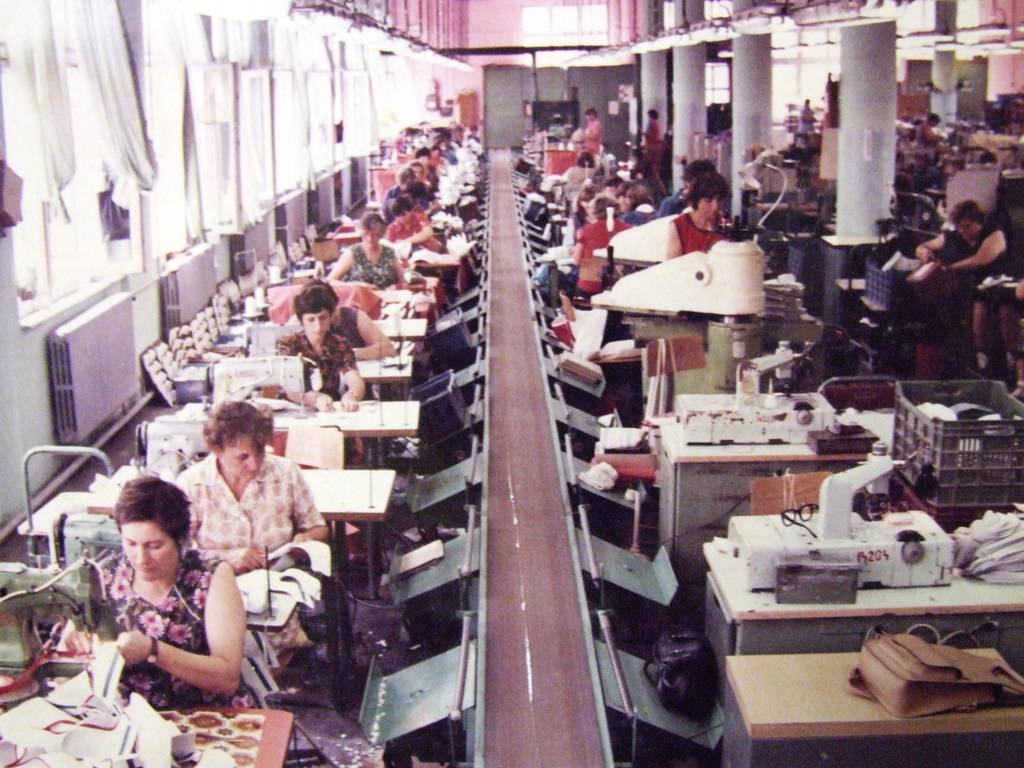 |
The Bata syndicate was a world wide company with the centre in Zlin. The two-storeyed factory building was completed in the middle of 1943. Jan Antonin Bata drew up a large-scale plan in connection with the new factory. He planned a ship harbour on the coast beside the factory and an airplane landing strip for passenger and postal service. The whirl of the World War II swept away a part of the plans, but Cikta Co. and its legal successor the Tisza shoe factory played a determining role in Martfű and the surrounding settlements' life for long decades. After the resume change, the factory had a community, cultural and life conducting effect on the population's everyday life. The political transformation in our country and the collapse of the former socialist era transformed the Hungarian light industry, too. The Tisza Shoe Factory formed a share company in 1991, then it went through newer and newer changes. Some years later various service providers and producers appeared. The Tisza Industrial Establishment preserves the tradition of the shoe production but today the new machines prepare not only shoes. The modern homes built up for the former employees are still standing, the Bata building estate is the part of the European Heritage from 1999.
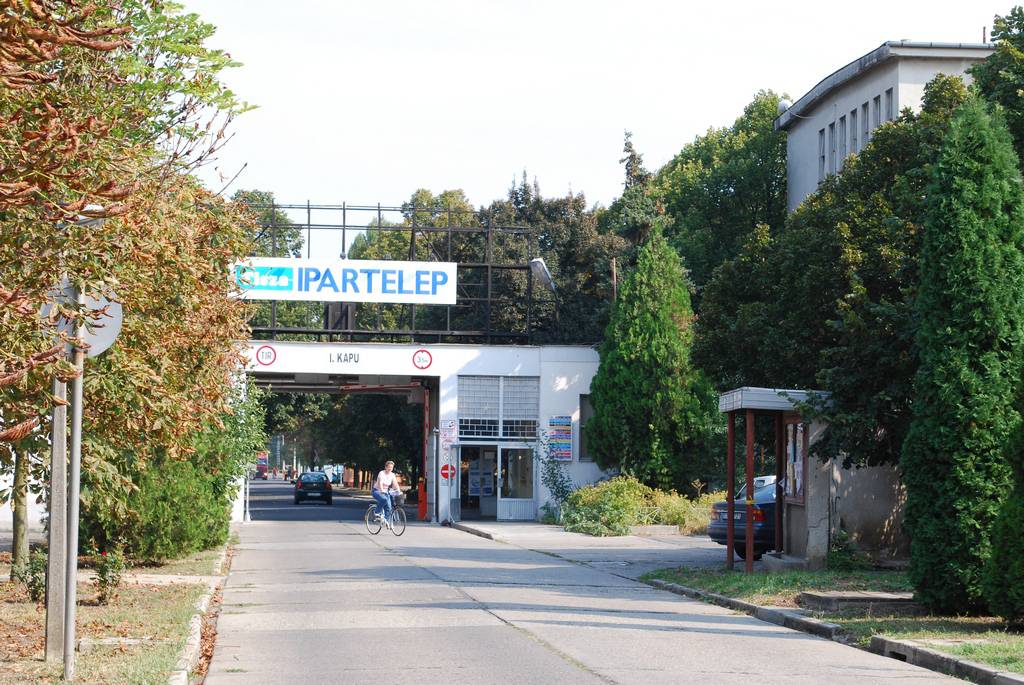 |
|
|
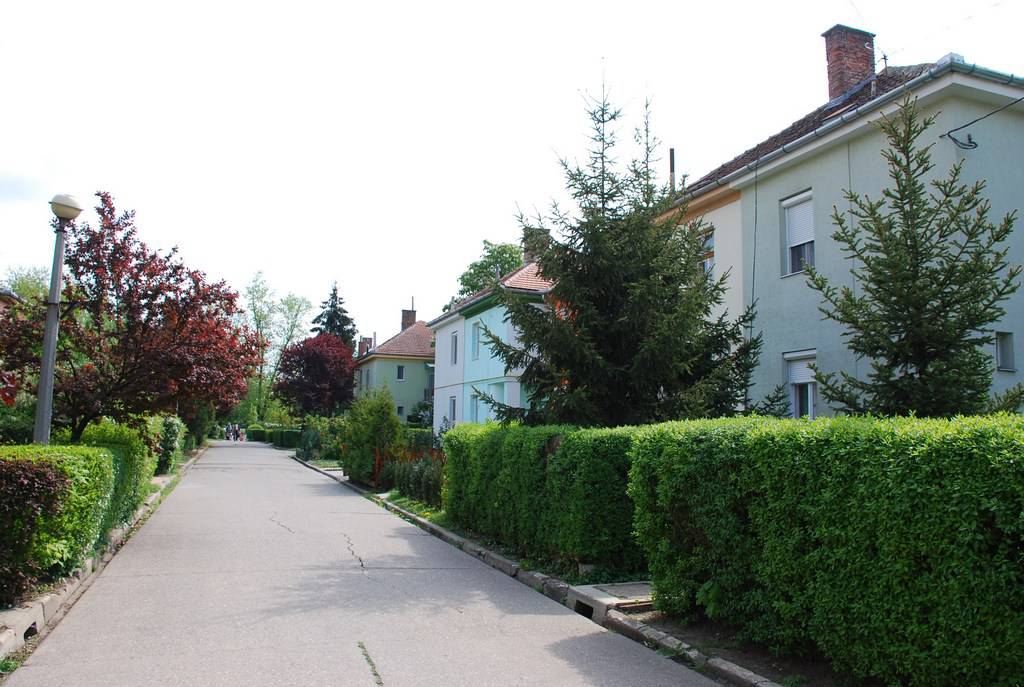 |
The public administration of the settlement grew with the development of the shoe industry. Martfű became independent from Tiszaföldvár in 1950, and on 20 August, 1970 it was declared as an incorporated municipality.
Industralisation of Martfű continued longer, so a newer immigration wave started. The ancestor of the factory of Bunge Zrt., the state-owned Vegetable Oil Industry and Detergent Manufacturer company, which was established by the union of more oil factories. In the selection of final place for their new establishment, just as well as in Bata’ s time, the favourable road and railway transportation opportunities, the water winning aspect and the proximity of the Tisza played a determining role. The ceremonial opening and the assay was in November, 1980, since then the factory had to face up with newer and newer challenges, just as well as Martfű’s youngest firm, the brewery.The first Hungarian Co-operative Brewery Company was formed in 1981. It only worked in a pilot mode in the starting year. Beside the brewing, the firm tried out introducing diverse soft drinks, which grew with big buoyancy and it was expanded. The management was looking for new opportunities in the interest of the consolidation of the market situation because of decrease in domestic beer consumption in the middle of the 1990s. The factory is currently the member of Heineken group. The firm went through serious modernisation in the latter days, in our days near a hundred people are employed, investing big emphasis in the environment consciousness, the modernisation of the production and the packaging. The firm created a supporter programme for Martfű, expressing that it belongs to the community which provides home for the factory.
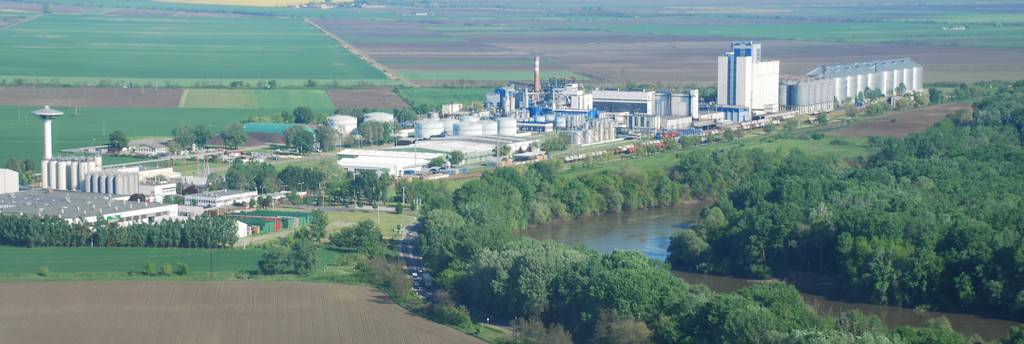
For Martfű to be a beautiful, livable, small town beside the industry, it needed and it still needs humanity, union of people and yearning for education.
Besides local institutions the generations receive a lot of help from civil organisations on all areas of life.
The high school helps in young persons' training beyond the elementary educational institutions.The kindergarten groups’ well-educated employees always let the children out to school with high competence.The primary school education gives lifelong knowledge researching newer and newer methods. The high school gives vocational qualification, additionally the education of the shoe production was recognised throughout the country for some decades. However, there are not shoe industry classes in the school anymore, but the institution, due to the flexibility of the employees, is going on the new ways of initiating the commercial and marketing trade groups.
On 1 March, 1989 Martfű received urban rank. Martfű always takes care its values: if it was possible: it lived, if it was necessary: it survived, but it did not give up, and it will never give up. Looking at the pictures taken decades ago and those which have been taken nowadays, you can still admire the changes even if you have not been here before, or if you left this place long time ago. As the shoe factory „grew out of” the maize-field, the new city centre grew up,too connecting the new and the old part of the settlement. The Saint Stephan Square includes the City Hall, a Catholic and a Reformed church, statues which are in commemoration of noble people and noble acts, nice trees and gorgeous flowers.
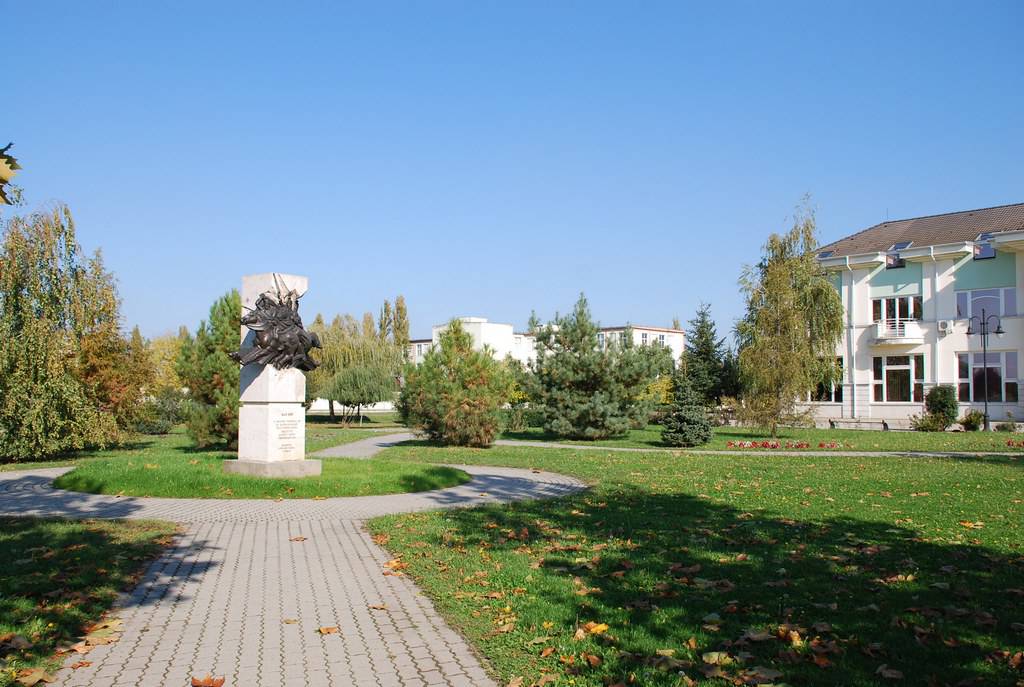 |
The present and the future of the city is closely related to the rational processing of the educational, medical, cultural and sport institutions, and further exploitation of natural and built environment.
Based on the local workforce and the treasure of Martfű new companies have been set up besides the old ones and this process is still continuing.
The area of Martfű Thermal SPA Touristical Centre is the property of Toma Bau Shareholder Group since 2002. The complex includes nearly 13 hectares. There is a romantic building of the Castle Hotel-Guesthouse Martfű**, Martfű Medical Camping*** with a boating lake and the family friendly three starred thermal hotel.
The Martfű SPA swimming pool is not merely the section of the wellness of the hotel. The three- metre-high diving board and the four–metre- deep sports pool are excellent practising courts for the divers and the dubbing swimmers. The centre wants to unite the affection of nature, sport and culture. A new tradition creating example is the EverGreen Tisza –Martfű Festival since 2010. The more than one-week-long programme series is organised with the cooperation of the companies, the local government and the institutions of the city.
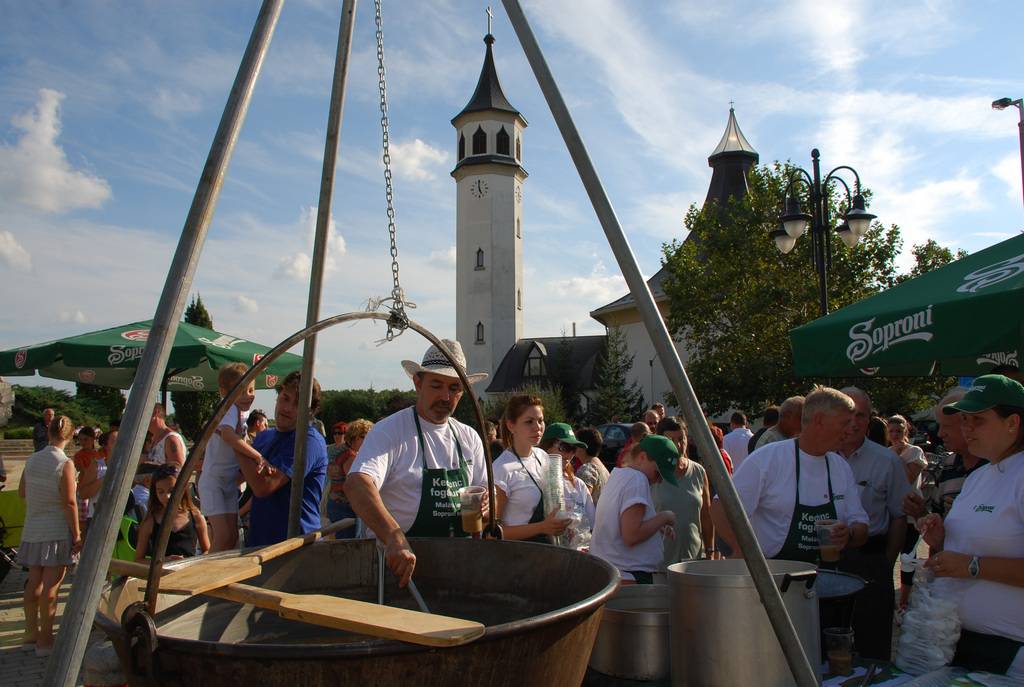 |
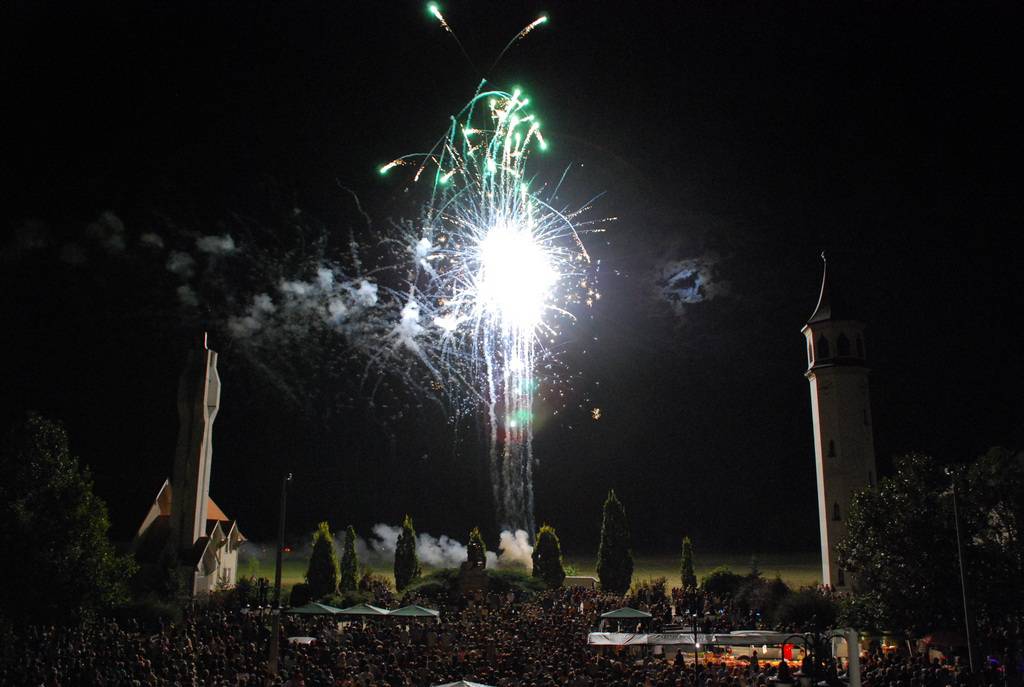 |
The aim of the Town Council is that the relationship among the local people, small and big firms and the city management become serried, because it is a virtue like thermal water and the chestnut-tree alley.
In 2010 Martfű collected its memories and heritage for the future in a form of a book.
„…I recommend this book to be the beginning of a common way on which the reminiscent, the formative and the innovative walk hand in hand.” these thoughts are given to the readers, and these thoughts control the everyday life of the settlement.
The successful European Union tenders, the region associations show the need of reformation here, on the left bank of the” blond” sandy Tisza.
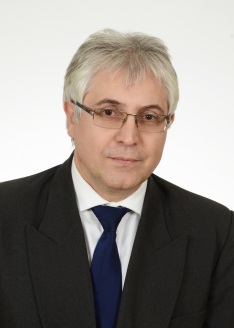 |
Martfű, the beautiful and lively town where everything can be found.
We have an excellent creche and nursery schools, we also have a primary school with good education for pupils and a secondary school with a great past which is achieving more and more. The local Culture Centre has a theatre room for 500 people and it has an exhibition about the town and the „Tisza –Shoe Factory” (Tisza Cipőgyár). We are really proud of our main square, St. Stephan Square (Szent István tér), which is together with the modern Town Hall, won the Hild-award (architectural prize). In the St. Stephan Square you can visit the St. Stephan Statue, the Catholic and the Reformed Church as well. |
The river and the town live and breathe together, here is the longest bend of the Tisza in the entire country. It’s perfect for fishing. It is a Nature Reserve with quite rare black poplars so take a walk and see them. Martfű Termal SPA invites you to relax at the sports swimming pool and the pleasant spa pools. This touristic building-complex with its wellnes- and conference centre is a very good location for programmes.
We welcome our guests and visitors to the May-Day Celebration (Május 1.), Martfű-Days and the „Örökzöld Tisza Festival” which is organized by the Martfű Termal Spa and the local government. Martfű is one of the youngest towns in Hungary. It is a dynamically developing town with a youthful mentality. Our small industrial town goes from stregth to stregth. Martfű is a very safe place to live.
Martfű is a business-friendly town. We encourage companies to come and set up business here. People can and like to work here. Martfű’s government does all it can and has succeeded in building good relationships with local enterprises and town residents. Over the years our community has become closer and stronger. We look forward to seeing you so come and visit us.
Dr. Papp Antal
Mayor of Martfű
Industrial character of Martfű is measurable in the number of small and medium-sized enterprises and big companies working here and in the construction of the settlement .
There were big enterprises which assented the improvement of the city in the last few decades, for example the Tisza Shoe Factory, decisive vegetable oil factory of Europe (Bunge Plc. -www.bunge.hu), and the first co-operative brewery of Hungary (Heineken Hungaria Breweries - Brewery of Martfű www.heinekenhungaria.hu)
 |
The first steps were made in the end of the 1800s, when the brick producing started. But the cradle of the industrialisation and the new era started with the Hungarian expansion of the Bata syndicate of Zlin.With the foundation of the Cikta Shareholder group the history of the city and the shoe industry combined tightly. The work started in the mill in 1942 but now there are different firms on its territory what shows the continuity.
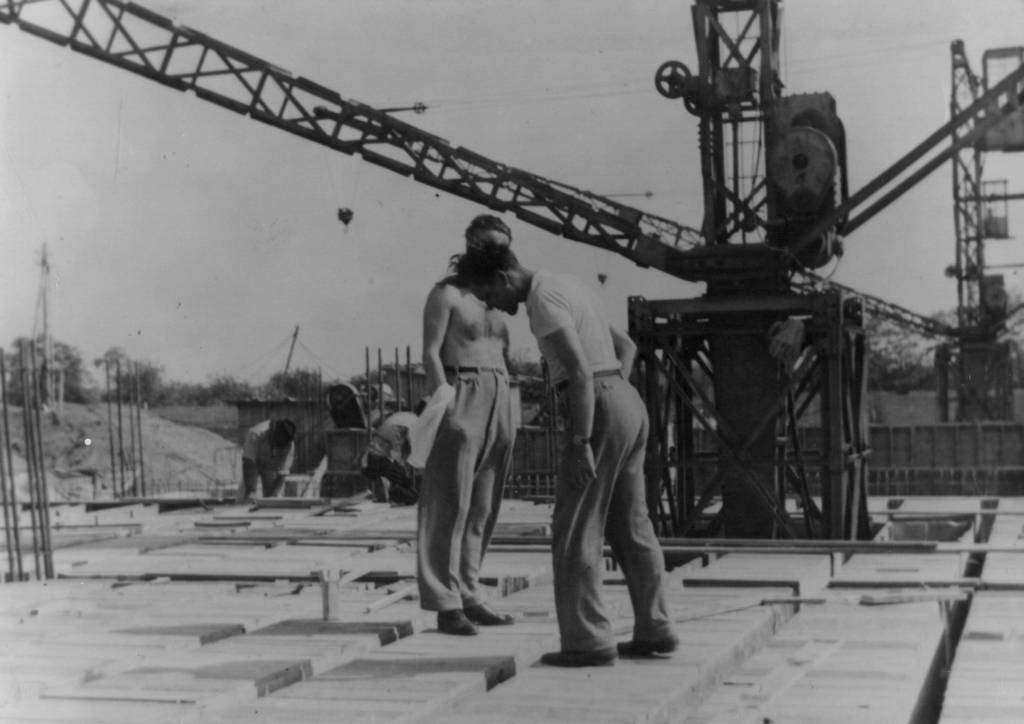 The workers check the adaptation of the concrete |
The shareholder group after the nationalisation changed its name to Tisza Cipő, which was known throughout the country for long decades.After the regime changed the factory fell apart, some units disappeared, other ones were settled undertaking with a new profile. The traditions called „tiszás” were carried on by the Tisza ShoeProducing Ltd. which has broken off, too. In the Tisza Industrial Establishment (3rd picture) the shoe producing companies play determining role nowadays too, they try to modernize and run with the reaction for the new challenges.There are more enterprises which are attached to the shoe producing of Martfű in some ways, for example with producing cutter knives and other tools or taking part in energy- supply for the work or transporting the workers. They undertake foreign orders as far as possible and try to exploit some European Union resources.
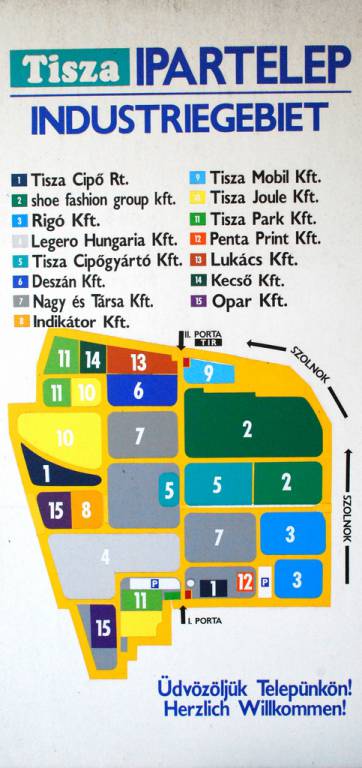 |
Coming from Szolnok on the left side of the road 442, the visitor or the transit passenger can see the Brewery first. The youngest firm of the settlement came into existence mostly with the partnership of collective and state farms. On the safety-based brewing and packaging play a determining role in the industrial profile of the settlement since the pilot mode, in 1981. It could be market-leader until the middle of the 1990s with continuous developments, the trial and introduction of new products and brands. It survived the decrease of the brewery production so it fusioned with the Soproni Breweries Plc. Later, as belonging to the syndicate, it changed its name to Brau Union Hungaria Breweries Plc., after this the brewery became the member of the Heineken group.
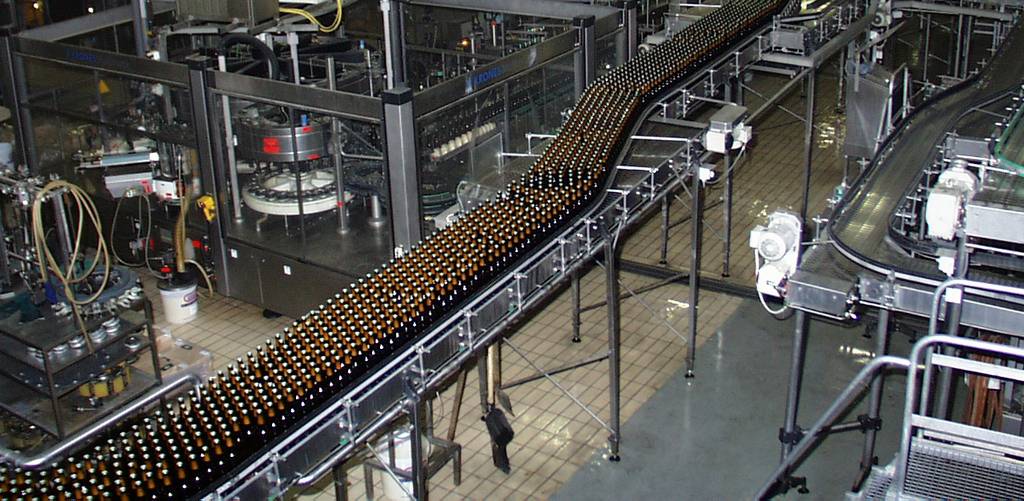 Modern industrial unit |
The significantly developed firm struggle to make its production activity environmentally correct. They pay attention for the protection of the environment with using the most modern methods. The company established the Heineken Hungaria for Marfű programme, which supports the local endowments or the improvements in the city, with one million forints annually.
The ancestor of Bunge Plc. was the state-owned Vegetable Oil Producing and Detergent Manufacturer company. The plan of the factory began in 1978, the ceremonial inaugutation and the assay was in November, 1980. The firm started to work in 1989, the factory is capable for refinement of 150 tons vegetable oil a day.
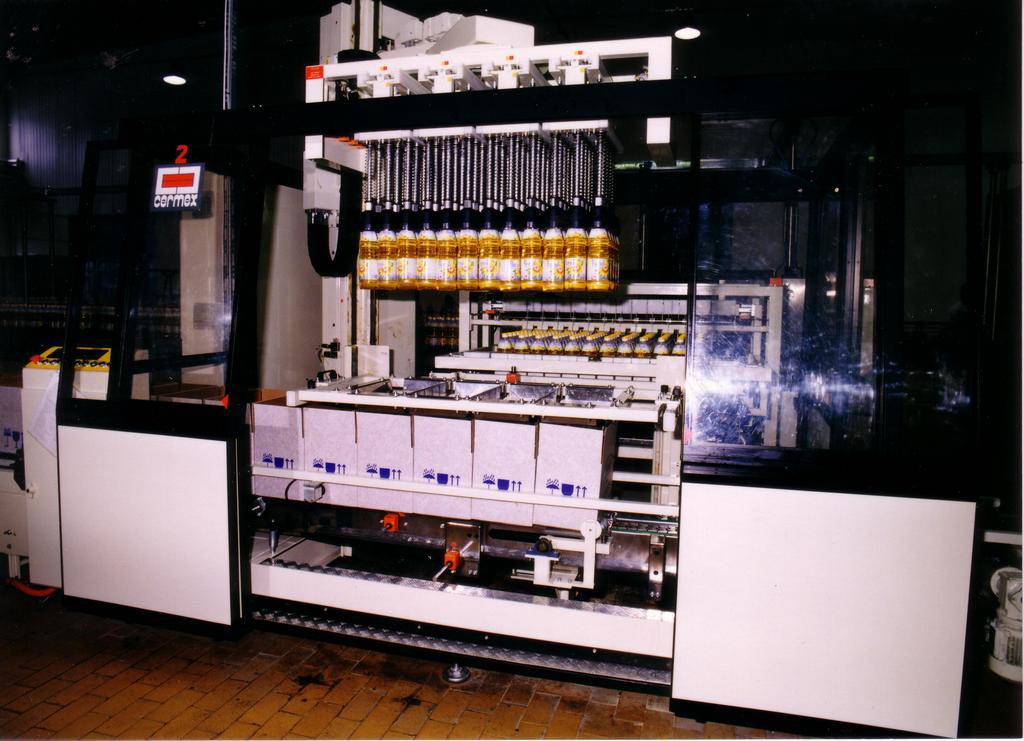 |
Cereol Holding took over the seed processing and the vegetable oil production with its bottling related activities.After the privatisation the second largest investment began in the factory’s history, as the result of which the Martfű factory became one of the most modern firms in Europe in point of the quality of the products. It was an important change in the life of the company when the Bunge Company was bought by the Cereol European business branch in October, 2002. With the change of the ownership the factory collective met new challenges and the development continued with more intensity. The management decided to develop the Martfű factory into one of its largest factories. Due to this capital investment, new firms were established beside the existing ones, new equipments and new control systems helped the successful operation. The vegetable oil factory is the integral part of the city life, with the other local enterprises, contributing to the budget of the settlement.
Some years ago, the Martfű Thermal SPA www.martfuspa.hu became a new enterprise element but since then it is an improving one, which bases to the values of the settlement. The area of Martfű Thermal SPA Touristical Centre is the property of Toma Bau Shareholder Group from 2002. The complex includes nearly 13 hectares. There is the romantic building of Castle Hotel-Guesthouse Martfű**, The Thermal Hotel of Martfű, Martfű Medical Camping***, The Martfű SPA swimming pool is not merely the section of the wellness of the hotel. The three- metre-high diving board and the four–metre- deep sports pool are excellent practising courts for the divers and the dubbing swimmers. The centre wants to unite the affection of nature, sport and culture. A new tradition creating example is the EverGreen Tisza –Martfű Festival since 2010. The more than one-week-long programme series is organised with the cooperation of the companies, the local government and the institutions of the city.
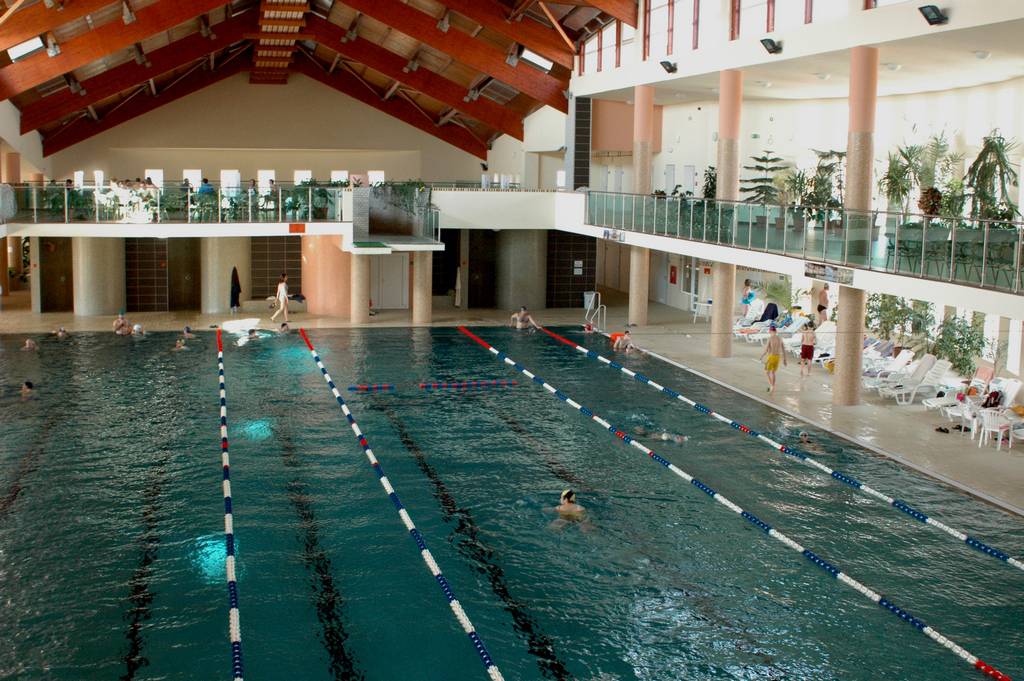 Newer tourist attraction |
The local government on its meeting on 27 January, 2011 made a decision about the foundation of the Local Enterprise Improving Base. Its aim was to help the new and the existing local enterprises in the promotion of their new investments to create new workplaces.
Since 2011, the local government with the local tax degree modification allowed the accession of the city by the local tax-payers as they can order on the usage of 1% of their charged taxes. In this way the tax-payers can name those things for which 1% of their paid tax is necessary to be spent on by the local government. The deserving aims are defined by the city council annually in its budget order.
This initiative helps the cognition and the solution of the problems and subsidies the starter and the existing enterprises
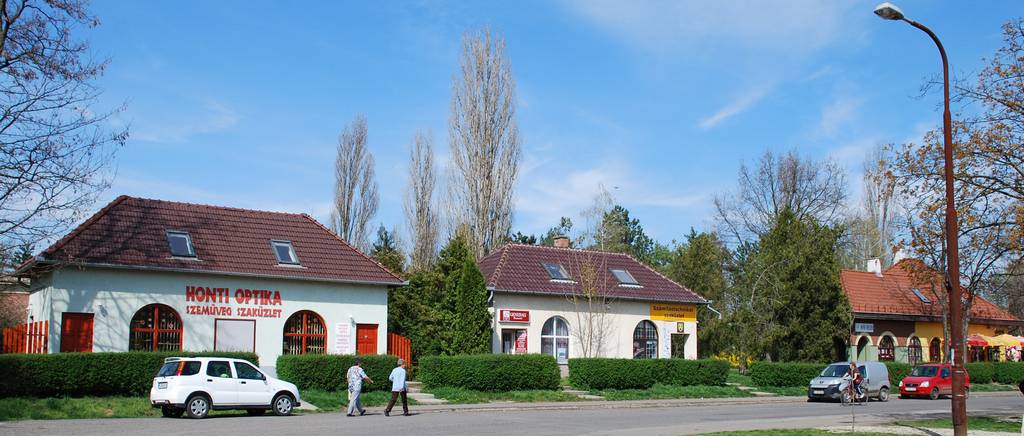 Row of shops on the Market place |
Martfű is a small town surrounded by factories. There are parks in its heart and the breathe of the Tisza on its edge. That is exactly where the people tired of the noise of world want to be: nature and calmness. And the gift of this land: curative thermal water. Local facilities, varied events, natural and built environment of the county-centre, Szolnok, which is nearby, make our town more attractive for the visitors.
The surface of the Tisza, Körös and Zagyva, in their natural state, creates „green corridor”, the backwaters are primarily ideal for the angler tourism. Its protected natural areas are the favourite areas for hikers, excursionists and nature-lovers. Medicinal water of our county makes the possibility for forming attractive international tourism.
The health tourism, in which Martfű plays an outstanding role, is one of the most advantageous touristic forms. A part of the spas in our county is well- equipped, suitable for the demands and provides wide- scaled services.
Anybody can feel the unique atmosphere of Martfű, who takes a walk from the city centre under the romantic chestnut-tree alley to the vital green coast of the Tisza. This is absolutely true for the 13- hectared territory of Martfű Thermal SPA touristical complex.
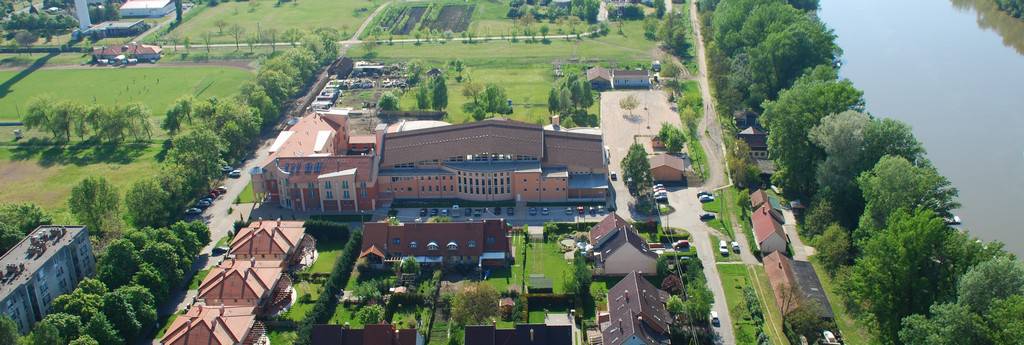 Martfű Thermal SPA from bird’s eye view |
The enterprise organises own programmes and they affect on their guests in physical, spiritual way with their services. Their visitors like taking part on the programmes of the city, and they gladly discover the the sights of the settlement.
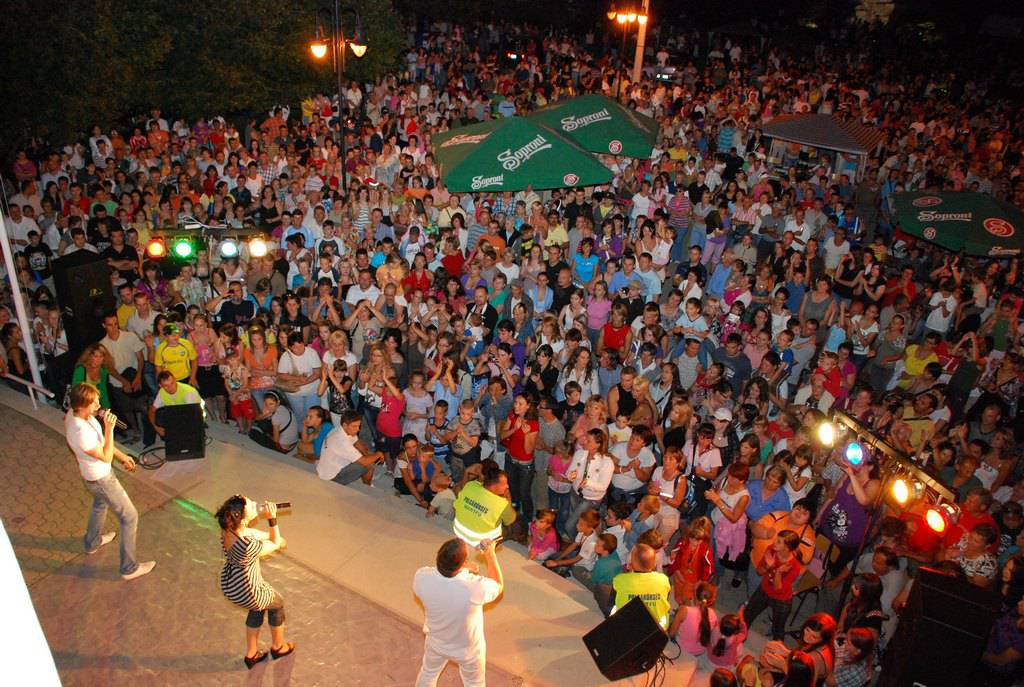 Festival feeling |
Our city is the youngest settlement of Jász-Nagykun Szolnok county, it is on the left side of the Tisza, about 20 km far from Szolnok. The stable, developed infrastructure, the outstandingly good public safety, the flowery, Tisza- coastal environment means pleasant living space to the people living here.
Its favourable geographical position and the proximity of the Tisza attracted the people onto this part. With the control of the Tisza the fishery and the Tisza crossing became possible, the decreased marsh places provided tillages for people to settle down.
The „blond” river, which is one of the most important natural treasure of Martfű and Eastern- Hungary, cuts windingly teasing coast with a big loop in the county's southern corner, on the line of which our small town extends in the north-eastern gate of Tiszazug interspersing with the backwaters and floodplains.
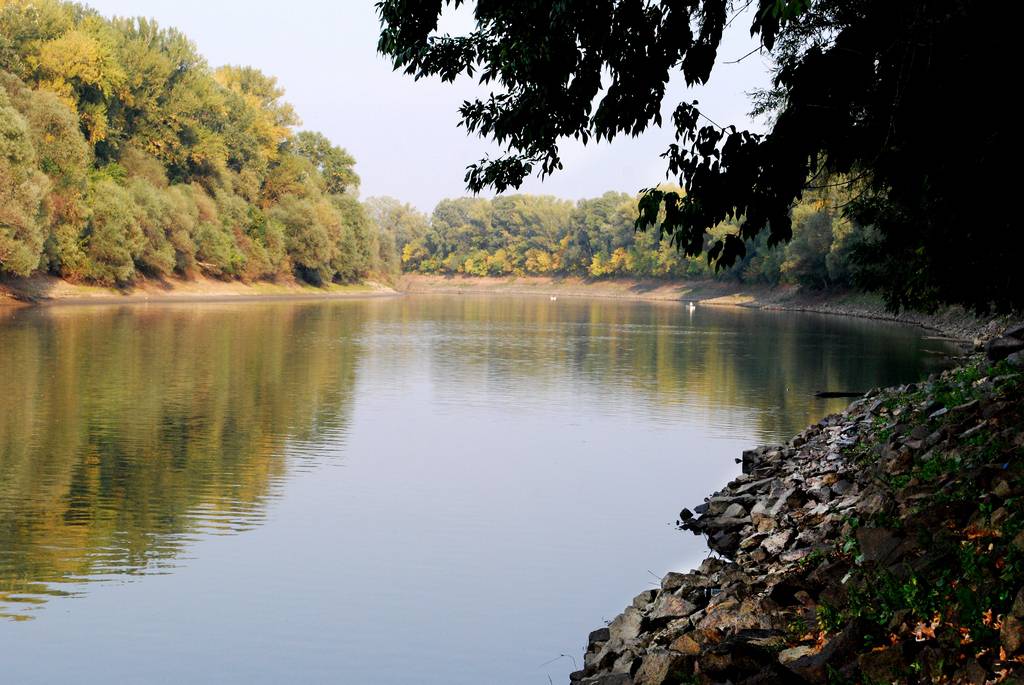 Tisza-bend |
The nature and the calmness keep the residents here, and attract the visitors. Not only these features call the attention of the tourists and visitors searching for recreation in this quiet, peaceful Tisza coastal city. But besides its natural values, medicinal water and the touristic centre attract the visitors. The area of Martfű Thermal SPA Touristical Centre is the property of Toma Bau Shareholder Group from 2002. The development was started after the purchasing of the area with a not refundable developing support.
After some successful projects the SPA was opened in 2009. The touristical komplex consists of almost 13 hectares. There is the Castle Hotel-Guesthouse Martfű**, camping and a boating lake, Thermal Hotel Martfű***, swimming pool, and Martfű Medical Camping and Apartment houses opened in June, 2005.
With the touristical investment, it conforms to the city life. Not a „fashionable” pool was built but also a medical spa which invigorates the medical bath culture.The Martfű Thermal SPA centre wants to unite the sport, the culture, and the love of nature.
